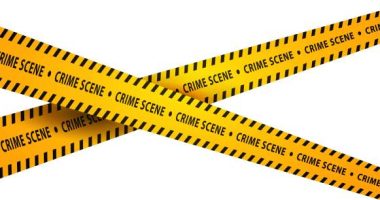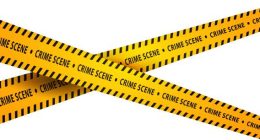Importance of Burnt Remains
It has been estimated that arsonist causes almost 40% of all fires. It may be with a view to make fraudulent insurance claim or to take revenge or will fully causing destruction to property or loss of life. The task of investigating the cause of fire rests on the police investigator. Unlike other crime scenes, the scene of arson requires special care and consideration, as even before the investigator would have arrived at the scene firemen and other persons trying to put off the blaze, would have disturbed the place.
The physical evidence in the form of burnt remains at the scene of arson can provide a good deal of information. Hence, when a fire breaks out, especially in the suspicious circumstances, it is often advantageous to submit various types of burnt material for laboratory examination. This will help to establish the probable cause of the fire by identifying the chemical or natural composition of combustible agent, the method used to set it alight and the consequences of the blaze.

Nature of Burnt Remains
The most commonly sought physical evidence in arson cases is the presence of flammable fluids or material. Even if the flammable material has been burnt or destroyed in the process of putting off the fire, detectable, flammable residues will still be available. Search for charred rags, wooden furniture, carpeting; empty containers should be made and sent to the laboratory.
The following burnt remains may throw considerable light on the cause of fire:
Smoke: It is an important product of most fires that is usually Jest sight of by the investigator. An odour and chemical examination of the smoke from the fire may provide information of definite value. Smoke consists largely of carbon, mineral ash and partly consumed organic material, along with a variety of invisible gases that impart to the smoke most of its odour. The burning of oil, petrol, tar, paint and similar organic material produce a black carbonaceous smoke.
The presence of black soot smoke may indicate that oil, petrol, tar, etc. is being burnt. This fact on the problem of arson because of the common has an important bearing c e of such material in starting fires. The odour of smoke can give some idea of the material being burnt. Burning feathers, wood, and hair produce use characteristic odour,
Ash: The examination of the ash remaining after a building is burnt, may give rise to important information about destruction as well as what is the nature of the material burnt. Clothing from murdered bodies is sometimes destroyed by making a bon-fire. Examination of the ash is therefore essential. Undisturbed ash may give some indication of the nature of material burnt.
Burnt wood fragments: The burnt wood fragments collected from the scene of fire, may help ascertain the depth of burn, character of the burn and possibly the type of wood burnt.
Fused and oxidised metal: Examination of wires and electrical installation in the laboratory may be necessary, if the fire is to be ascribed to short-circuiting by electrical wiring. It may be desirable to examine such materials for presence of metals other than the wire normally used e.g. to determine if zinc or other low melting metal is alloyed with the wires. The condition of residual insulation and the extent of deterioration are best examined by the laboratory methods.
Suspected failures of appliances: Appliances often require examination of critical electrical component or a defective area of appliances.
Burnt paper and cloth: Paper and cloth are common items in bon- fires used to destroy such materials. At times, it is highly desirable to determine the nature of the material so destroyed. The distinction between the burnt paper and burnt cloth, though obvious to the eye, will need laboratory analysis. Often the structure of ash may clearly indicate whether it has resulted from burning of paper or fabric or some other type of material.
From the burnt paper decipherment of printed or written material may be possible. In such cases the fragments of burnt material are collected very carefully, to avoid crumbling, placed in a container of sufficient size, and taken to the laboratory with a minimum of disturbance. If the material is extremely fragile, spraying on it a thin lacquer can strengthen it.
If the problem involves burnt oven fabric, some information may be obtained from the appearance of the ash itself. Even chemical or spectrographic analysis in comparison with non-burnt specimen can help identification of the material. The mineral composition of cotton, wool, silk, rayon, etc. is all different. Presence of mineral materials in mordanting dyes used in some fabrics may help its identification.
Volatile flammables: arsonists use various kinds of flammable liquids. Most common are petroleum products like petrol and kerosene. Volatile flammable, therefore constitutes the most important constituents to be detected and identified in the laboratory. The general principle of isolating a liquid flammable or accelerant from materials such as soil, wood fragment, debris, etc. is to distill the liquid from the solid residue in a current of steam. Identification of the accelerant may not be simple because the mixed materials generally lose much of their volatile content before being recovered. Sometimes it is possible to determine with some reliability whether or not the material came from a particular source.
Collection of Evidence

(i) Provide a number of containers suitable for collecting various kinds of evidence.
(ii) Collect and store in closed or sealed containers any material suspected of carrying combustible liquids such as petrol and transport them to the laboratory with minimum of delay. This collection may include soil soaked in combustible liquid, wood suspected of having been soaked in the fuel; paper, rags, and packing materials that are believed to contain volatile fuel.
(iii) Search should be made in the region of origin of fire, for any trace of the igniter, burnt matches, any wires or other questioned metallic objects, and any burnt suspicious objects which did not form part of the environment.
(iv) Search should be made for containers that might have been used in transporting oil, petrol or other combustible liquids.
(v) A general search should be made for miscellaneous evidence like tool marks, broken glass, paint fragments and similar items of evidence, which will suggest breaking and entering.
Method of Examination
Numerous physical and chemical methods are available for the examination of burnt remains.
- Visual and microscopic examination of debris from the scene of arson can reveal good deal of information on the possible accelerant used in the arson.
- By distillation and chemical tests, it is sometimes possible to distinguish between most of the mixed materials.
- By far the most useful procedure is to employ gas-liquid chromatography for a reasonably positive identification of volatile material.
- Infrared absorption spectrometry and mass spectrometry have also been employed in examining exhibits involved in arson cases.
- The burnt ash may be subjected to density gradient and spectrographic analysis by comparison with ash of the known burnt specimens.
- The most recent headspace sampling technique coupled with chromatography is also used especially for recovery and identification of accelerant from arson debris.
For more informations subscribe to our blog.







